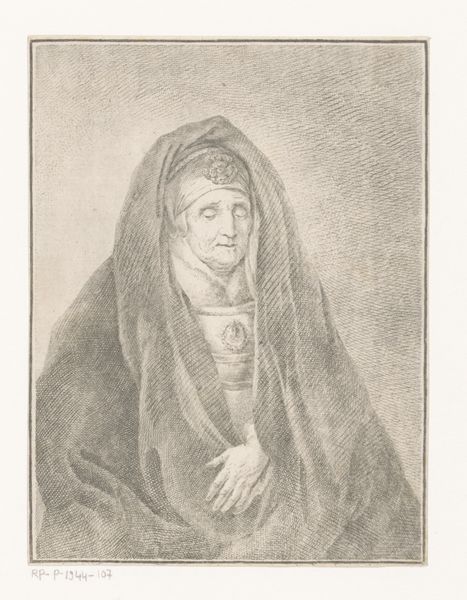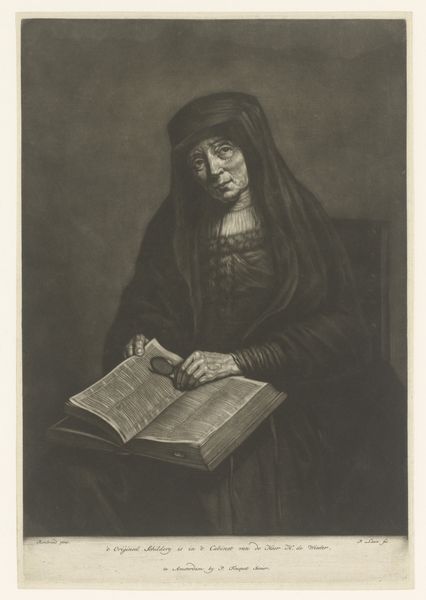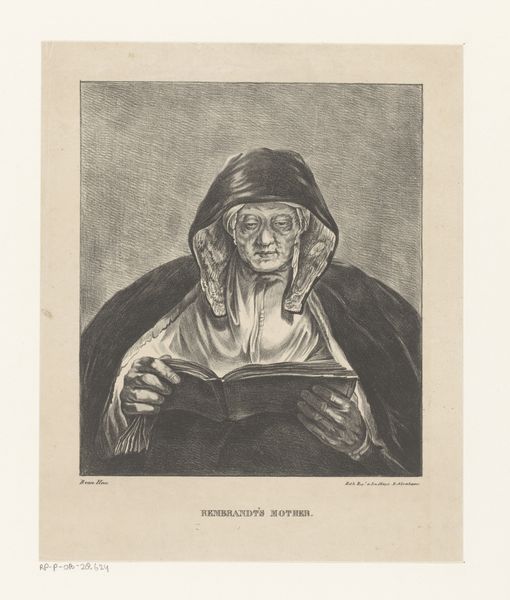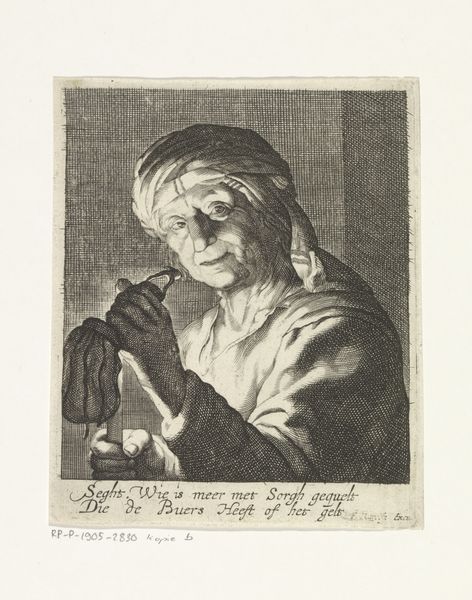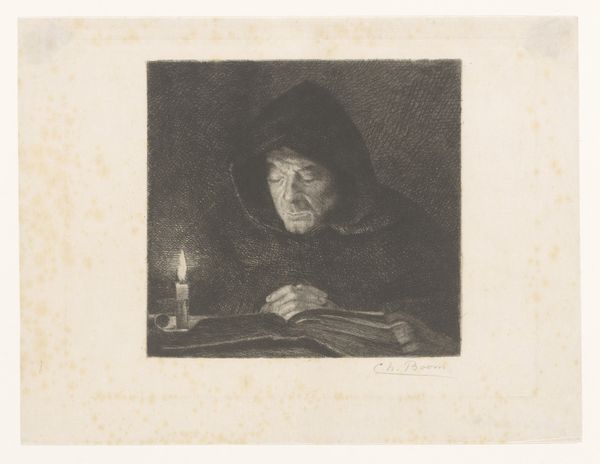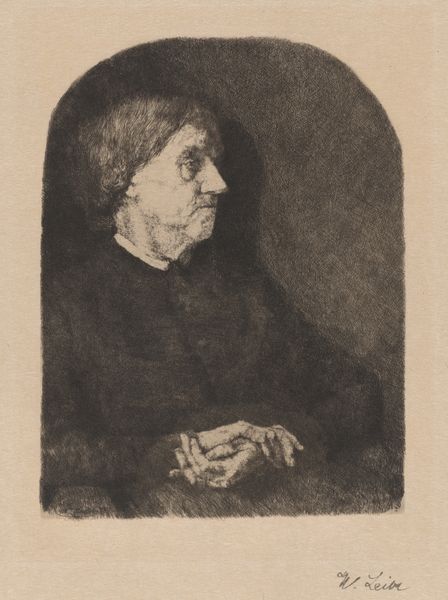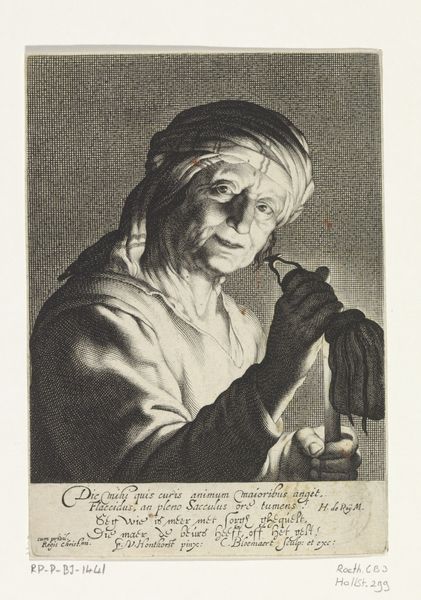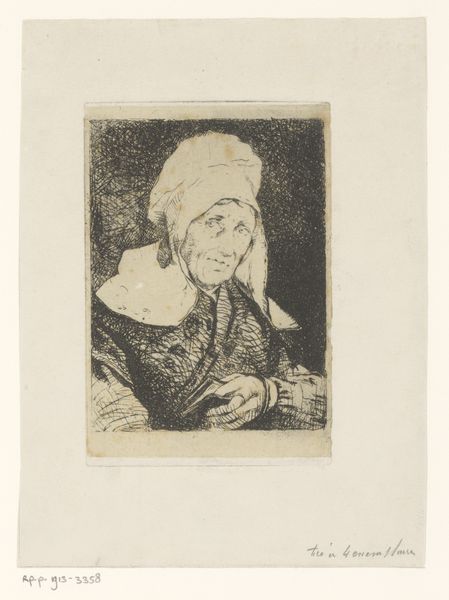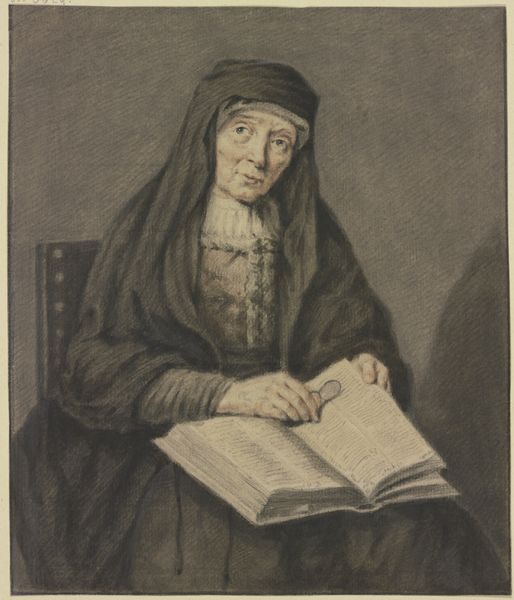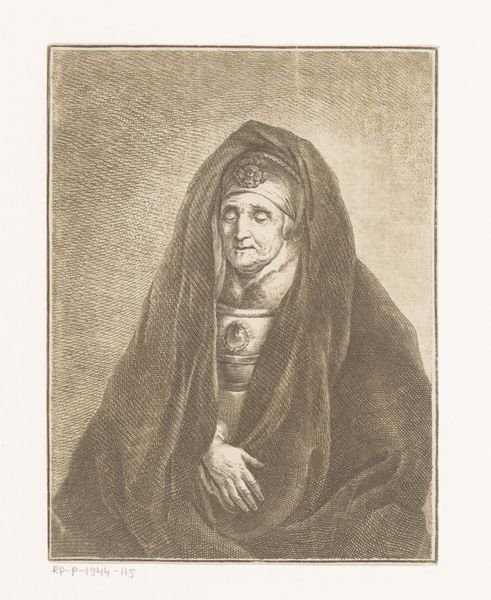
drawing, print, etching, intaglio, charcoal
#
portrait
#
drawing
#
narrative-art
#
baroque
# print
#
etching
#
intaglio
#
charcoal drawing
#
charcoal
#
history-painting
Dimensions: height 353 mm, width 249 mm
Copyright: Rijks Museum: Open Domain
Curator: Welcome. We are standing before James McArdell's "Portret van een oude lezende vrouw", or "Portrait of an old woman reading," dating roughly between 1738 and 1765. It is currently housed here at the Rijksmuseum. The print employs the techniques of etching and intaglio on paper and is based on a painting by Rembrandt of his mother. Editor: The initial impression is quite somber, almost severe. The figure is cloaked in darkness, intensely focused on her book, suggesting deep contemplation and knowledge sought from the text. I wonder, what was the material process of producing this image and the source that served as its origin? Curator: McArdell worked from a Rembrandt painting and employed the labor-intensive intaglio printing method, manipulating tools to carve the image onto a metal plate. The plate would then be inked and pressed onto paper to create multiple impressions, which speaks to a culture that embraced replicability and the commodification of images. These reproductions, sold to the public, also extended Rembrandt’s visual language to wider audiences. Editor: Indeed, it feels like an act of preservation and dissemination of visual motifs. The woman's visage, heavily lined and aged, is framed by a dark hood. I can see parallels between her clothing and a habit, underscoring wisdom or, more subtly, social identity through distinct dress conventions, yet it doesn't fully read as religious due to the reading itself. This juxtaposition creates a unique psychological tension. What book do you suppose she is studying, or could this printed medium lend insights? Curator: It's difficult to know definitively what the woman is reading. Print enabled mass communication during a burgeoning market. I wonder how it functioned in early society. Was this the tool for democratization of access or limited by social structure? This form challenges our accepted conventions today as access to information via tablets/phones become widespread with manufacturing and labor implications for sustainability in a way unavailable in prior periods. Editor: That’s fascinating; each object tells an important, complex story. The simple rendering of her posture, slumped yet attentive, reveals both resignation and purpose. It’s an emotionally resonant piece that suggests she draws solace and enlightenment. Curator: Absolutely, I'm left considering how a culture of mechanical reproduction facilitated the distribution of ideas. Editor: And I’m left pondering how consistent are cultural markers and social structures.
Comments
No comments
Be the first to comment and join the conversation on the ultimate creative platform.
